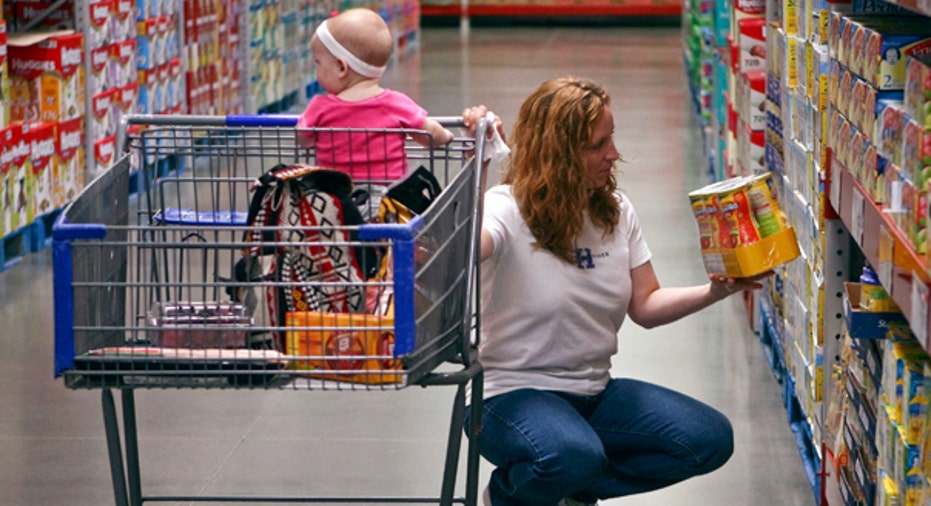Fed Study: Recession Really Changed our Spending Habits

The historic reduction in consumer debt since the start of the Great Recession has come substantially from households tightening their belts, not merely as a result of banks writing off bad loans, according to economists at the Federal Reserve Bank of New York.
Even during a time of deep job cuts, households pulled back sharply on borrowing, according to a report out April 22. What is more, at least part of the move was voluntary, not a reaction to higher lending standards.
"Holding aside defaults, from 2007 through 2011 consumers reduced their debt at a pace not seen over the last 10 years," said the report, "The Financial Crisis at the Kitchen Table: Trends in Household Debt and Credit."
Consumers themselves paid down more than one-third of the overall reduction in combined credit card and auto loan balances, the report said, shedding new light on consumer behavior during a period of wrenching economic change.
Consumers stopped charging
Until now, the decline in household debt seen since 2008 has been largely attributed to lenders shedding bad loans while they shut the door on new borrowing. While it is true that write-offs accounted for most of the debt decline, the new Fed analysis -- which draws on credit report data -- provides a finer-grain look at the plunge than previously available.
"An analysis ... reveals that households actively reduced their obligations during this period by paying down their current debts and reducing new borrowing," the report said.
Looking at credit cards and auto loans combined, consumers paid down $68 billion in 2009 and another $15 billion in 2010. The figures do not include write-offs by banks.
When write-offs are included, the overall decline in credit card balances during the two-year period was $136 billion, Fed data show. Car loans fell $80 billion in the period.
The Fed analysis indicates that household frugality was responsible for about 38% of the cutback in combined credit card and auto loan obligations.
Looking at debt a different way, by the number of open credit card accounts, reinforces the findings. Open accounts peaked near 500 million at mid-2008, then plunged to 378 million by the third quarter of 2010, where they leveled off.
Key evidence: credit applications
But how much of that drop came from consumers, and how much was the result of banks closing their vaults? Although the two effects are difficult to separate, the Fed analysis provided a peek into an aspect of the debt drawdown that was previously opaque. A look at credit report data found that credit inquiries triggered by account applications fell in step with the overall reduction in accounts, indicating that consumers cut their appetite for new credit.
"The available evidence suggests that fewer applications for credit ... contributed to the decline in new account openings," the Fed economists concluded.
Some of the reduction may have been from consumers not bothering to apply for credit on the assumption they would be turned down. Nevertheless, the abstemious behavior came in the face of rapid rises in unemployment starting in the second half of 2008. That suggests that the precautionary urge to set aside more savings in lean times outweighed the desire to maintain spending levels by using credit to replace lost wages.
As for closing of existing card accounts, banks played a major role, the paper said, citing previous research that found 13% of consumers had an account closed by a bank during 2009.
Mortgages also showed that consumers pushed to pay down debts, beyond the massive reduction caused by foreclosures. Non-foreclosure pay-downs of housing debt reached $241 billion in 2011, reversing what had been steady increases in housing debt through 2007.
Will borrowing resume?
Overall household debt of all types has fallen $1.3 trillion since the financial crisis began in 2008. While the Fed's new look shows how hard consumers bit the bullet, the big question now is how consumer borrowing -- and spending -- will pick up and provide fuel for the economic recovery. If consumers voluntarily cut debt, will they resume borrowing on their own timetable as well?
"We certainly think demand for borrowing is likely to pick up," said Scott Hoyt, senior director for consumer economics at Moody's Analytics. Borrowers who hit the brakes on spending voluntarily will start needing to replace appliances and other put-off purchases. Car loans have picked up, but lenders still seem hunkered down when it comes to unsecured lending such as with credit cards.
"Banks say they're loosening (lending) standards," Hoyt said, "but it appears that's happening for higher quality borrowers."
Since the Credit CARD Act of 2009, lenders are being more cautious, said Keith Leggett, senior economist at the American Bankers Association. "I think the environment is different now," he said. "With the CARD Act, lenders are restricted in their ability to price for risk -- they're going to be more cautious in extending credit."
See related: Fed survey: Recession shrank card debt, but crushed household wealth